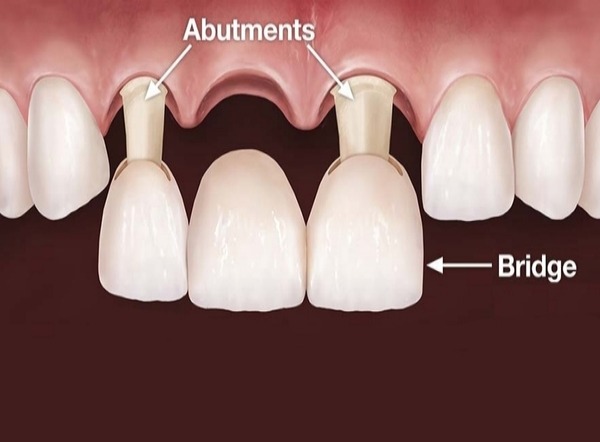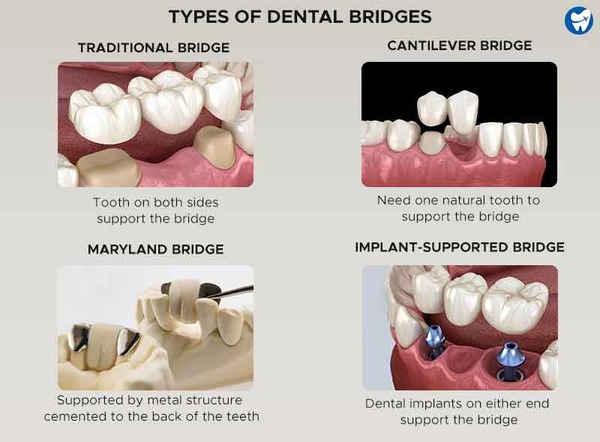Dental Bridges
Dental bridges are a fixed dental restoration used to replace one or more missing teeth by bridging the gap between two teeth. They are anchored to the natural teeth or dental implants on either side of the gap, known as abutment teeth, with a false tooth (or teeth) in between, called a pontic.
Benefits
- Restores Functionality: Enables proper chewing and speaking by filling the gap left by missing teeth.
- Prevents Teeth Shifting: Maintains the alignment of remaining teeth, preventing them from shifting into the empty space.
- Aesthetic Improvement: Enhances the appearance of your smile by replacing missing teeth with natural-looking alternatives.
- Maintains Facial Structure: Helps in maintaining the shape of your face by supporting your lips and cheeks.

Types of Dental Bridges
- Traditional Bridges: Involve creating a crown for the tooth or implant on either side of the missing tooth with a pontic in between. These are the most common type of dental bridges and are usually made of porcelain fused to metal or ceramics.
- Cantilever Bridges: Used when there is only one natural tooth adjacent to the missing tooth gap. These are less common and not recommended for the back of the mouth where it can put too much force on other teeth.
- Maryland Bonded Bridges: Also known as a resin-bonded bridge, these are made of a plastic tooth and gums supported by a metal framework. Metal wings on each side of the bridge are bonded to your existing teeth.
- Implant-Supported Bridges: Used when you have more than one tooth missing. These bridges are supported by dental implants rather than natural teeth. This type of bridge is the most stable and durable.
